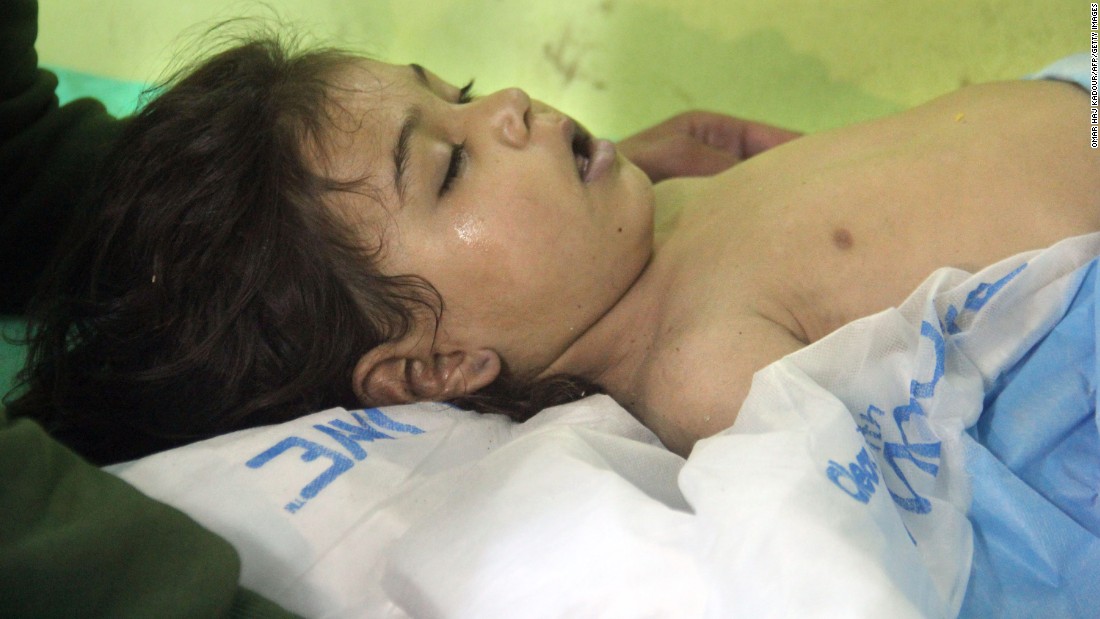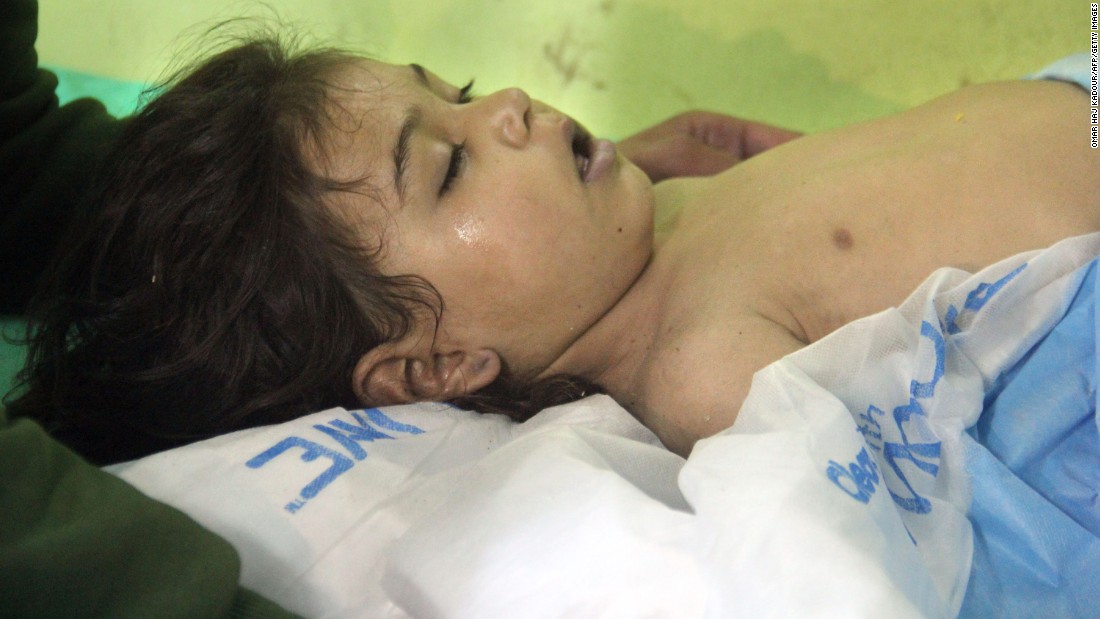BALADI NEWS
The chemical weapons watchdog has concluded that the Syrian air force carried out three attacks in March 2017 involving the nerve agent Sarin or chlorine.
The Organisation for the Prohibition of Chemical Weapons (OPCW) said 106 people were affected by the incidents in the opposition-held village of Latamina.
The latest findings were the first to be released by the new Investigation and Identification Team (IIT).
Assad's government has denied ever using chemical weapons.
However, a joint UN-OPCW mission had also accused Assad regime forces of using Sarin in an attack on the town of Khan Sheikhoun, which reportedly killed more than 80 people, just days after the incidents in nearby Latamina.
It also concluded that the Assad regime forces had used chlorine as a weapon on other occasions during the civil war.
The IIT was established by OPCW member states last year after Russia - whose forces are backing the regime's military - vetoed a UN Security Council resolution to extend the joint mission’s mandate.
It was tasked with identifying the perpetrators of chemical weapons use in Syria, as determined by the separate OPCW Fact-Finding Mission.
For its first report, the IIT focused on incidents in Latamina, about 40km (25 miles) north-west of the city of Hama, in late March 2017.
Investigators interviewed witnesses, analysed samples and remnants collected at the sites of the incidents, reviewed the symptoms of casualties and medical staff, examined imagery, and consulted experts, according to the OPCW.
On the basis of the information obtained, the IIT concluded there were reasonable grounds to believe that:
On 24 March, an Su-22 military plane belonging to the 50th Brigade of the 22nd Air Division of the Syrian air force, departing from Shayrat airbase, dropped an M4000 aerial bomb containing Sarin in southern Latamina, affecting 16 people
On 25 March, a Syrian air force helicopter, departing from Hama airbase, dropped a cylinder on the Latamina hospital. The cylinder broke through the roof, ruptured and released chlorine, affecting 30 people
On 30 March, an Su-22 belonging to the 50th Brigade of the 22nd Air Division of the Syrian air force, departing from Shayrat airbase, dropped an M4000 aerial bomb containing Sarin in southern Latamina, affecting 60 people
The IIT Co-ordinator, Santiago Oñate-Laborde, said: “Attacks of such a strategic nature would have only taken place on the basis of orders from the higher authorities of the Syrian Arab Republic military command.”
OPCW Director General Fernando Arias underscored that the IIT was “not a judicial or quasi-judicial body with the authority to assign individual criminal responsibility”.
“It is now up to the [OPCW] Executive Council and the Conference of the States Parties to the Chemical Weapons Convention, the United Nations Secretary-General, and the international community as a whole to take any further action they deem appropriate and necessary,” he added.
The IIT has also asked to investigate six other incidents in which the OPCW Fact-Finding Mission has concluded a toxic chemical is likely to have been used as a weapon.
They include one in the then besieged opposition-held town of Douma on 7 April 2018, which medics said killed more than 40 people.
The FFM said last year that data gave "reasonable grounds that the use of a toxic chemical as a weapon took place", and that the “chemical contained reactive chlorine”. But it did not assign blame because it was not in its mandate to do so.
The US, UK and France accused Syrian government forces of using chemical weapons in Douma. But the government and Russia said the incident was “staged” by rescue workers.
Source: BBC.







